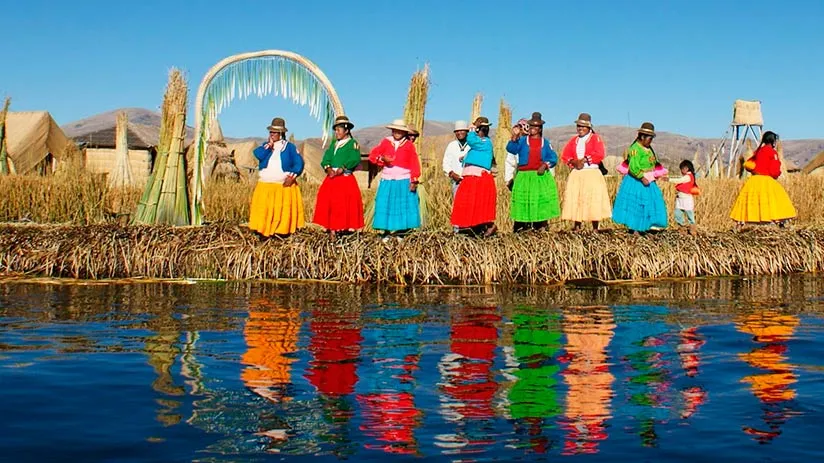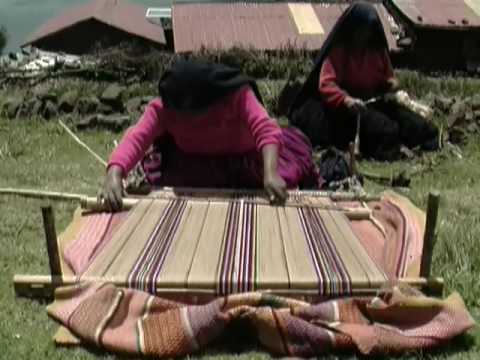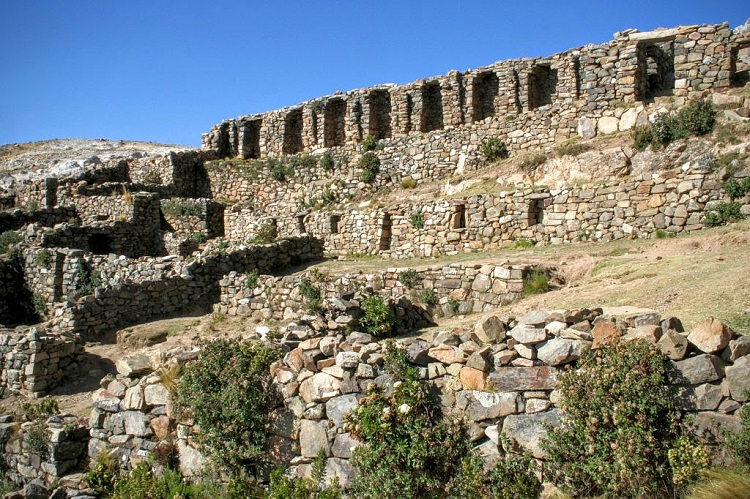A Scholarly Sojourn on Lake Titicaca: Reflections on History, Culture, and Altitude

Ah, Lake Titicaca. Even the name itself evokes a sense of ancient mystery and breathtaking beauty. As a retired history professor from Oxford, I’ve spent a lifetime immersed in the chronicles of civilizations, but few experiences have brought history to life as vividly as my recent 10-day journey to this majestic lake, nestled high in the Andes Mountains. Leaving behind the familiar comforts of my Oxford college, I embarked on this adventure with VistaLocation, eager to witness firsthand the enduring legacy of the Inca and Aymara peoples. Armed with my trusty leather satchel, comfortable walking shoes, and a thirst for knowledge, I set forth into a world unlike any I had previously encountered. I adjust my spectacles, a habit ingrained from years of poring over ancient texts, ready to observe and absorb the wonders that awaited.
The Floating World of the Uros
My first stop was the extraordinary Uros Floating Islands, an archipelago of artificial islands crafted entirely from totora reeds. The sheer ingenuity of these constructions is simply remarkable. As the intense Andean sun glinted off the rippling water, I was struck by the vibrant yellow-green hue of the totora, a stark contrast to the deep blue of the lake. I learned that the Uros people meticulously layer these reeds, constantly replenishing them from the bottom to prevent decay. This ongoing process is essential to maintain the islands' structural integrity, a testament to their resourcefulness and perseverance.
These islands, I discovered, were initially created as a defensive strategy. The Uros, seeking refuge from the more aggressive Inca and Colla tribes, chose to live on these mobile islands, allowing them to move and evade potential threats. Today, their lifestyle is a fascinating blend of traditional practices and modern adaptations. They still fish and weave, relying on the lake for sustenance and crafting intricate textiles for trade.
I attempted a few phrases in Aymara, with limited success, I must admit! My linguistic skills, honed on Latin and Ancient Greek, proved less effective in the Andes. However, even through gestures and broken Spanish, I managed to engage in meaningful conversations with the Uros people. I was particularly curious about the impact of tourism on their traditions. While it undoubtedly provides an economic lifeline, I wondered about the potential for cultural erosion. The Uros people, thankfully, seemed keen on preserving their unique heritage, showcasing their craftsmanship and sharing their history with visitors.

Taquile Island: A Tapestry of Tradition
Next, I ventured to Taquile Island, a world away from the floating islands, yet equally captivating. The island is a tapestry of terraced hillsides, a testament to the agricultural skills of its inhabitants. The deep blue of Lake Titicaca provided a stunning backdrop to the brightly dressed locals, creating a scene of unparalleled beauty.
Taquile is renowned for its traditional textiles and knitting practices, and I was utterly mesmerized by the intricate patterns and vibrant colors. The chullo, the traditional knitted hat, is particularly striking, each design imbued with symbolic meaning. I was fascinated to learn about the distinct gender roles associated with these crafts: men are responsible for knitting, while women weave. The symbolism woven into their designs is deeply rooted in their cultural history, a living testament to their ancestral beliefs and values.
Tourism has undoubtedly left its mark on Taquile. While it has brought economic opportunities, it has also presented challenges to their traditional way of life. I did witness concerted efforts at cultural preservation, with community-led initiatives to promote and protect their unique heritage. However, I also observed a generational divide, with some younger Taquileños embracing modern customs while others remained steadfast in their commitment to preserving their ancestral traditions.
Isla del Sol: Incan Echoes in the Landscape
A boat trip aboard a small, brightly painted wooden vessel transported me to Isla del Sol, believed to be the birthplace of the Inca sun god, Inti. The journey itself was a visual feast, with the intense blue of the sky mirrored perfectly in the crystalline waters of the lake.

The island is steeped in Inca mythology and history, and exploring the Inca ruins at Pilko Kaina, located at the southern end of the island, was a truly awe-inspiring experience. The challenging hikes along the rocky terrain were rewarded with breathtaking panoramic views of the lake. From the highest point, the immensity of Lake Titicaca stretched before me, a shimmering expanse of blue under the vast Andean sky. Standing amidst those ancient stones, bathed in the early morning light that cast long, dramatic shadows, I felt a profound connection to the past, to the generations who had walked this sacred ground before me.
Culinary Delights and Environmental Realities
No journey is complete without indulging in the local cuisine. I savored Trucha Frita, a golden-brown, crispy fried trout served with potatoes and a simple salad. Delicious as it was, I couldn't help but reflect on the ecological impact of introducing trout, a non-native species, to Lake Titicaca. This introduction has undoubtedly affected the local ecosystem and the traditional fishing practices of the Aymara and Quechua communities.
I also relished the Quinoa Soup, its earthy aroma and slightly nutty flavor a comforting warmth against the cool Andean air. Served hot in a rustic ceramic bowl, it was a delightful culinary experience. Quinoa, a staple crop in the Andes for centuries, is a nutritional powerhouse. Its recent surge in global popularity is a testament to its remarkable health benefits.
And of course, there was the ubiquitous Mate de Coca, coca tea. Its slightly bitter taste and invigorating effect were most welcome, particularly in combating the effects of altitude sickness. It is a traditional remedy, deeply ingrained in the culture, and I found it to be quite effective in alleviating my symptoms.
Speaking of altitude, Lake Titicaca sits at approximately 12,500 feet above sea level, and the effects of the high-altitude environment were certainly noticeable. I experienced mild headaches and shortness of breath, but thankfully, the coca tea and a slower pace helped me manage the symptoms. The local flora and fauna have adapted remarkably to survive in this environment. The totora reeds, for example, thrive in the shallow waters, while the giant Andean coot, with its specialized respiratory system, is well-suited to the thin air.
However, alongside the natural beauty, I also witnessed the visible challenges of pollution and overfishing in the lake. The presence of plastic waste was particularly disheartening, a stark reminder of the global environmental crisis. I did observe some conservation efforts, with local communities and organizations working to protect the lake's ecosystem. Their efforts are commendable, but a more concerted and comprehensive approach is needed to ensure the long-term health of this vital resource.
Reflections on a Journey Through Time
My 10-day sojourn on Lake Titicaca was more than just a vacation; it was a deeply enriching journey through history, culture, and the resilience of the Andean people. It brought to life the countless hours I had spent studying Andean history, transforming abstract concepts into tangible realities.
I encourage anyone with an interest in the history and culture of the Andes to explore similar tours and accommodations offered through VistaLocation. You’ll find the opportunity to experience these wonders with comfort and expert guidance.
It’s important to acknowledge that tourism presents a complex paradox. On one hand, it provides crucial economic opportunities for local communities, empowering them to sustain their livelihoods and preserve their cultural heritage. On the other hand, it can potentially lead to cultural erosion and environmental degradation if not managed responsibly. As travelers, we must be mindful of our impact and strive to be ethical and respectful visitors.
Before embarking on a trip to places like Lake Titicaca, it's essential to consider a few ethical considerations. Support local businesses and communities whenever possible, be respectful of local customs and traditions, minimize your environmental impact, and educate yourself about the history and culture of the region.
For further reading on Andean history and culture, I highly recommend "Open Veins of Latin America" by Eduardo Galeano, a powerful and insightful critique of colonialism and its lasting impact. The works of Maria Rostworowski Tovar, a renowned Peruvian historian, are also invaluable for understanding the pre-Columbian history of the region.
As the sun sets over Lake Titicaca, casting a golden glow on the ancient ruins, I sit and contemplate the enduring legacy of the Inca civilization. It's a scene that will forever be etched in my memory, a reminder of the profound beauty and enduring strength of the Andean people. I return to Oxford with a renewed sense of purpose, eager to share my experiences and insights with my students, hoping to inspire in them the same passion for history and culture that has guided my life's journey. You can explore tours and accommodations through VistaLocation.
SEO KEYWORDS: Lake Titicaca Tours, Lake Titicaca Travel, Visit Lake Titicaca, Lake Titicaca Peru, Puno Peru Travel, Uros Floating Islands Tour, Taquile Island Lake Titicaca, Isla del Sol Lake Titicaca, Lake Titicaca tours from Puno, Best Lake Titicaca tour packages, Ethical tours Lake Titicaca communities, Lake Titicaca homestay Taquile Island, Lake Titicaca travel guide for seniors, Lake Titicaca responsible travel tips, Lake Titicaca Uros Islands guided tour, Lake Titicaca cultural immersion tour, Best time of year to visit Lake Titicaca, Lake Titicaca vegetarian food options, Andes Mountains Peru, Aymara Culture, Quechua language, High Altitude Travel, Titicaca National Reserve, Puno Accommodation, Trucha Lake Titicaca, What is the best way to visit Lake Titicaca?, What is the altitude of Lake Titicaca?, How can I travel responsibly in Lake Titicaca?, What is the local currency in Lake Titicaca?, Are there any ethical concerns when visiting Lake Titicaca?